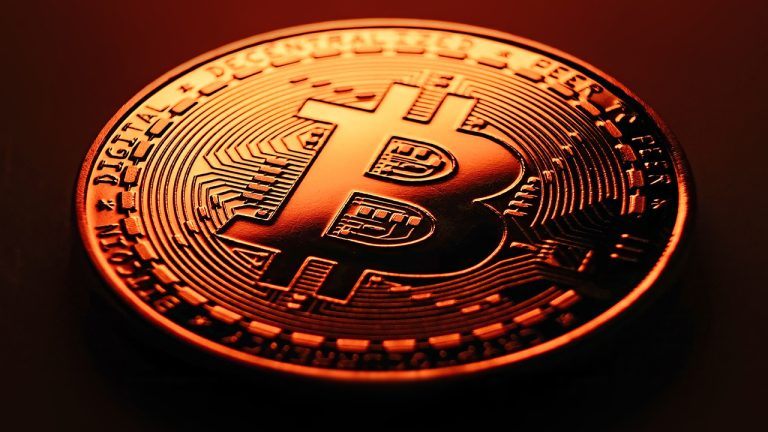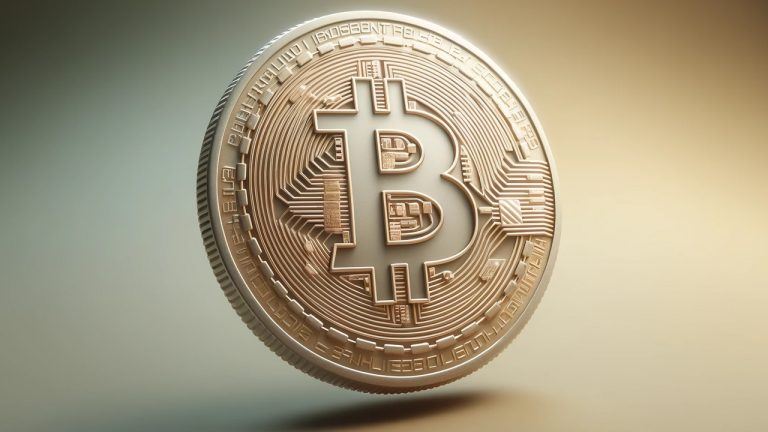 Bitcoin’s network activity has dropped to its lowest level in a year, according to Cryptoquant and its researchers, marking a significant decline from previous highs. Bitcoin Transactions and Fees Plummet Cryptoquant‘s Bitcoin Network Activity Index, a key metric tracking transactions and user engagement, has fallen 15% since November 2024, now standing at 3,760—the lowest level […]
Bitcoin’s network activity has dropped to its lowest level in a year, according to Cryptoquant and its researchers, marking a significant decline from previous highs. Bitcoin Transactions and Fees Plummet Cryptoquant‘s Bitcoin Network Activity Index, a key metric tracking transactions and user engagement, has fallen 15% since November 2024, now standing at 3,760—the lowest level […] In 2024, the Bitcoin network has hit some significant milestones, including reaching an all-time high price, achieving peak hashrate and difficulty, and recording the highest onchain fees ever. On top of these metrics, the blockchain also saw its busiest transfer day in history on April 23, with 927,010 transactions confirmed in one day. Bitcoin’s High-Traffic […]
In 2024, the Bitcoin network has hit some significant milestones, including reaching an all-time high price, achieving peak hashrate and difficulty, and recording the highest onchain fees ever. On top of these metrics, the blockchain also saw its busiest transfer day in history on April 23, with 927,010 transactions confirmed in one day. Bitcoin’s High-Traffic […] After peaking at 677 exahash per second (EH/s) on July 25, Bitcoin’s network hashrate declined to 629 EH/s as of Aug. 4. The recent uptick in Bitcoin’s mining difficulty, coupled with the subsequent drop in its price, has driven bitcoin mining revenue to record lows. Monthly Bitcoin Fee Revenue Drops 75%, Hashrate Slides 48 EH/s […]
After peaking at 677 exahash per second (EH/s) on July 25, Bitcoin’s network hashrate declined to 629 EH/s as of Aug. 4. The recent uptick in Bitcoin’s mining difficulty, coupled with the subsequent drop in its price, has driven bitcoin mining revenue to record lows. Monthly Bitcoin Fee Revenue Drops 75%, Hashrate Slides 48 EH/s […] Bitcoin miners are witnessing a resurgence in activity as the network’s hashrate approaches all-time highs, according to the latest research from Cryptoquant. This recovery is attributed to improved revenues, which have led to a reduction in selling pressure from miners. Miners Hold Steady: Bitcoin Hashrate Rises, Selling Pressure Decreases The latest onchain market activities report […]
Bitcoin miners are witnessing a resurgence in activity as the network’s hashrate approaches all-time highs, according to the latest research from Cryptoquant. This recovery is attributed to improved revenues, which have led to a reduction in selling pressure from miners. Miners Hold Steady: Bitcoin Hashrate Rises, Selling Pressure Decreases The latest onchain market activities report […] Bitcoin’s hashrate has rebounded to the historic highs seen just before the fourth reward halving event. According to the seven-day simple moving average, the network’s hashrate reached a record 657 exahash per second (EH/s) this week. Bitcoin Hashrate Reaches Unprecedented 657 EH/s Following a significant drop post-halving, much of the hashrate has returned to the […]
Bitcoin’s hashrate has rebounded to the historic highs seen just before the fourth reward halving event. According to the seven-day simple moving average, the network’s hashrate reached a record 657 exahash per second (EH/s) this week. Bitcoin Hashrate Reaches Unprecedented 657 EH/s Following a significant drop post-halving, much of the hashrate has returned to the […]
Aptos suffered a five-hour outage, coincidentally in the same week that the network launched this time last year.
Layer-1 blockchain Aptos Network has managed to bring its network back to normal operations after a lengthy five-hour outage that saw transactions on its network “impacted."
According to the Aptoscan network tracker, on-chain transactions on the Move language-based blockchain were halted 11:11pm UTC on Oct. 18 at block 104621314 — down for more than five hours.

Aptos seemingly confirmed the outage with a post on X (formerly Twitter), noting:
“Your energy for Aptos One was so electric, you cut the lights!”
At the time, the team added that “transactions on the network have been impacted” and they were “working diligently” to resolve the issue.
Your energy for Aptos One was so electric, you cut the lights!
— Aptos (@Aptos_Network) October 19, 2023
What that means at the moment is that transactions on the network have been impacted. We are working diligently to resolve the issue and will keep you updated upon completion.
The outage then led crypto exchanges Upbit and OKX to alert users about maintenance for the Aptos network, adding that APT deposits and withdrawals were temporarily suspended.
Before the outage, Aptos Labs posted a birthday message saying, “It's been a year since Aptos Mainnet burst onto the scene.”
Aptos, a heavily VC-backed project that launched on Oct. 17, 2022, was built by former Meta employees who worked on Facebook’s Diem blockchain.
Related: Solana records 1 outage in first half of 2023, 100% uptime in Q2
It may be outage season as Aptos is not the only chain to go down recently.
On Oct. 19, the Theta Network team stated that a recent node upgrade created an “edge case bug” that caused blocks on the main chain to stop producing for several hours.
It added that a fix had been implemented and the network was operating normally again.
In September, the Coinbase layer-2 network Base suffered its first major outage since the launch in the previous month.
Magazine: Beyond crypto: Zero-knowledge proofs show potential from voting to finance

Binance’s BNB Chain is set for two upgrades that are aimed at improving finality of the network and compatibility with other EVM blockchains.
Binance’s proprietary BNB Smart Chain (BSC) is set to undergo two hard forks through August 2023 that are aimed at reducing the possibility of a malicious blockchain reorganization and increasing the compatibility with other EVM blockchain networks.
The Plato and Hertz upgrades are scheduled for Aug. 10 and Aug. 30 respectively, following extensive testing. The Plato upgrade, which has already taken place, introduces BEP-126. The latest evolution proposal implements a fast finality mechanism that is expected to rule out the ability for blocks to be reverted.

Arno Bauer, Senior Solution Architect at BNB Chain, unpacked the specifics of the network upgrades in conversation with Cointelegraph. The fast finality mechanism is expected to reduce the chance of chain reogranization and stabilize block production, while allowing users to access accurate information from the latest finalized block instantly.
“Overall, BEP-126 aims to enhance blockchain security and efficiency on the BNB Smart Chain by introducing a fast finality mechanism.”
Bauer added that finality is a core concept of blockchain technology, referring to the point at which a transaction or block of transactions can no longer be altered or reversed. Finality remains a crucial component in maintaining trust and preventing double-spending in blockchain systems.
BEP-126 introduces fast finality through a series of steps. Validators begin by proposing a block to the network which is propagated to other validators. Validators then sign for the block using their private key, creating a vote message. Voting aggregation then takes place, with validator votes gathered into a pool and aggregated if the direct parent block has enough votes.
Related: Binance Smart Chain and Binance Chain become BNB Chain
Validators must follow specific rules when voting for blocks, an example being not publishing two distinct votes for the same height. The finality rules also stipulate that a block is ‘justified’ if there’s an attestation in the child block's header, while it's finalized if it's justified and its direct child is justified.
The fork including the highest justified block is considered the longest chain, even if other chain forks have a higher difficulty sum. Producing blocks and finalizing blocks also have different requirements in terms of the number of validators needed.
Lastly, BNB Chain validators are rewarded for voting, and those who violate the vote rules are slashed in a similar manner to Ethereum’s proof of stake protocol.
The Hertz hard fork is earmarked for Aug. 30 and is aimed at keeping the BNB Chain up to date with the latest development of Ethereum Virtual Machine (EVM) blockchains. As Bauer explains, the BSC needs to keep its block and transaction structures as well as its base EVM updated to match Ethereum's recently implemented Berlin and London forks.
“Therefore, for compatibility reasons it is important that those EIPs are also enabled on BSC to ensure a smooth development and ecosystem growth.”
Bauer said that the fast finality mechanism should provide a more secure environment for decentralized applications (DApps), while faster transaction finality should improve responsiveness and efficiency of DApps running on BSC.
Magazine: Deposit risk: What do crypto exchanges really do with your money?

Tick tock, next block. The Bitcoin network passed block 800,000 with less than a year to go to the next block reward halving.
The Bitcoin (BTC) network has produced its 800,000 block since its inception in 2009, with just 40,000 blocks left to mine before the network’s next mining reward halving.
The 800,000th block contained 3721 transactions at 1.64MB, with the price of BTC trading at $29,815 on July 24, as market researcher Dylan LeClair noted on Twitter:
#Bitcoin block 800,000. pic.twitter.com/Yw9c6klqbY
— Dylan LeClair (@DylanLeClair_) July 24, 2023
The milestone was widely shared across the social media platform on July 24, with Bitcoin proponents and industry commentators highlighting the milestone as an indicator of network security and resilience:
The #Bitcoin network just produced block number 800,000.
— Walker⚡️ (@WalkerAmerica) July 24, 2023
800,000 blocks without a central bank.
800,000 blocks without a government.
800,000 blocks without a CEO.
800,000 blocks without asking for permission. pic.twitter.com/hf8RpC3jlP
Bitcoin’s block height at its core is a measure of the sequential blocks of the blockchain, which contain transactions and data that are bundled into blocks by network miners. Block height also serves as a measure of a specific block in relation to the genesis block, the founding block of the network’s chain.
₿: 800,000th bitcoin block mined! pic.twitter.com/uGKi15zRaO
— Documenting ₿itcoin (@DocumentingBTC) July 24, 2023
The metric acts as a chronological order of transactions and blocks of the network, with each new block connected to the previous one in the chain. This assists in allowing users to identify the order in which transactions are recorded.
Block height also serves as a measure of Bitcoin’s immutability. The more blocks added to the chain, the more computing power will be required in order for a malicious actor to attempt to tamper with previous blocks.
Related: Bitcoin miners still bullish despite toughest bear market yet — Hut8, Foundry, Braiins
As previously explored by Cointelegraph, a 50 percent attack would require an attacker to acquire enough computing power to recalculate the proof-of-work of every subsequent block of a tampered transaction-containing block.
Block height also serves as a measure used to maintain Bitcoin’s mining difficulty. Proof-of-work based blockchain networks have their mining difficulty of mining adjusted periodically based on the total computational power of the network and the time it took to mine a certain number of previous blocks.
Bitcoin’s network aims to have a new block generated every 10 minutes. If more hashing power is added to the network at a given time, this would influence this metric and the network automatically adjusts the mining difficulty every two weeks to maintain equilibrium.
Bitcoin’s block height also dictates the amount of Bitcoin rewarded to miners for adding a new block to the network. Bitcoin’s protocol is designed to have block halving events every 4 years, or 210,000 blocks on the chain.

The initial block reward was 50 BTC back in 2009, before it subsequently halved to 25 BTC, 12.5 BTC and currently 6.25 BTC in 2012, 2016 and 2020.
Bitcoin’s next halving is earmarked to take place in April 2024, with the latest block reward halving to 3.125 BTC. Halving events historically coincide with major price rallies for BTC and the wider cryptocurrency markets.
With less than a year to the next halving, other macro events have also arrested Bitcoin’s price decline following its last major peak at $69,000. Analysts and commentators have speculated that the latest Bitcoin exchange-traded funds (ETFs) filings from the likes of global asset managers BlackRock and Fidelity indicate renewed institutional interest in Bitcoin.
Magazine: Bitcoin 2023 in Miami comes to grips with ‘shitcoins on Bitcoin’

The Solana network is seeing steady improvements in performance and reliability as outages become more infrequent.
Layer-1 blockchain network Solana has shown an improvement in reliability and uptime so far this year only having one outage in 2023, according to a report from the Solana Foundation.
On July 20, the Solana Foundation released its latest performance report stating it has improved the network through the first half of 2023, as measured by uptime and the ratio of non-voting-to-voting transactions.
In previous years, Solana has been plagued with reliability and uptime issues which its co-founder, Anatoly Yakovenko, has previously called a “curse” but said the network’s low-cost transactions were the cause of the outages.
The latest report noted Solana has experienced 100% uptime since Feb. 25, marking a whole quarter without an outage. The single February outage saw the network knocked offline for almost 19 hours.

The report added there have been improvements in the ratio of voting to non-voting transactions. Voting transactions occur when a validator votes to confirm one or more proposed blocks of information and non-voting transactions are triggered by user behavior on the blockchain.
“Over time, we would expect to see the ratio of voting to non-voting transactions go down because the overall percentage of voting transactions should drop as the network gets more efficient.”
Blocktimes, which measure how quickly new blocks are added to the chain, have also become more consistent aside from the spike during the outage.
1/ The Solana Foundation has released the most recent @Solana Network Performance report.
— Solana Foundation (@SolanaFndn) July 20, 2023
The Solana network’s performance has improved through H1 2023, as measured by uptime, the ratio of non-voting-to-voting transactions, & more.
Read the full report: https://t.co/naOftyknLA pic.twitter.com/yI9Q8swWdT
Transactions per second (TPS) are also used to measure the network’s performance and throughput. Solana’s maximum daily TPS has been climbing since January with significant increases that correlate with new network upgrades, it noted. Dune Analytics reports the current figure on the network at 3,777 transactions per second.
Related: Solana price hits a 2023 high, but do strong fundamentals back the SOL rally?
The Artemis dashboard reports a daily transaction count of 19.2 million for Solana which has been the leader for this metric until it was recently usurped by the Sui Network due to the popularity of a Web3 game.
The price of the blockchain's native token, Solana (SOL),was down 4.5% on the day — around $25.50 at the time of writing, according to Cointelegraph data.
The token has been performing well over the past month with gains of 50% but remains down 90% from its November 2021 all-time high of $260.
Magazine: How smart people invest in dumb memecoins — 3-point plan for success
 Bitcoin is on a roll in 2023, breaking records left and right. For instance, on May 2, at block height 787,895, the cryptocurrency’s hashrate soared to 491 exahash per second (EH/s). Moreover, on April 20, at block height 786,240, the difficulty hit a new high of 48.71 trillion. But that’s not the only thing that’s […]
Bitcoin is on a roll in 2023, breaking records left and right. For instance, on May 2, at block height 787,895, the cryptocurrency’s hashrate soared to 491 exahash per second (EH/s). Moreover, on April 20, at block height 786,240, the difficulty hit a new high of 48.71 trillion. But that’s not the only thing that’s […]